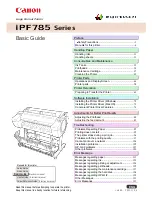
INITIALIZATION
22 December 1998
2-2
During power-up initialization, the scanner performs the following steps (refer to the
flow chart on the previous page).
1. Tests the ROM checksum and makes a RAM read/write test. If the CPU cannot
test these, the CPU determines that a memory error has occurred.
2. Initializes the I/O port, E
2
PROM, and gate arrays (IPU and memory controller).
3. Initializes the scanner motor driver.
4. Checks the home position sensor signal timing while moving the scanners. If
the CPU does not detect a signal change within the specified period, it
determines that a home position error has occurred.
5. Adjusts the difference between the even and odd black levels and total black
level.
6. Turns the exposure lamp on.
7. Adjusts the white level, and checks the peak level of the auto gain control. If the
CPU cannot adjust them to the specified levels, the CPU determines that a
lamp error has occurred.
8. If the black level or the white level cannot be adjusted properly during the
above initialization process, the scanner retries the initialization up to three
times. If the CPU detects an abnormal condition at the third time (step 14), the
CPU stores the default values of the black and white levels into the NVRAM on
the SCU.
9. Checks the ADF interlock switch signal. If the CPU detects that the switch is
open, it determines that an ADF open error has occurred.
10. When the endorser unit has been installed, the endorser motor turns on for 0.1
second.
11. Checks the signals from the feed, read, and feed-out sensors. If any of them
are on, the CPU determines that there is a paper jam.
12. Checks the document sensor signal. If the CPU detects a document on the
document table, check #13 is not made until the document is removed.
13. Checks the document table position sensor signal timing while lifting and
lowering the document table.
14. See step 8.
















































